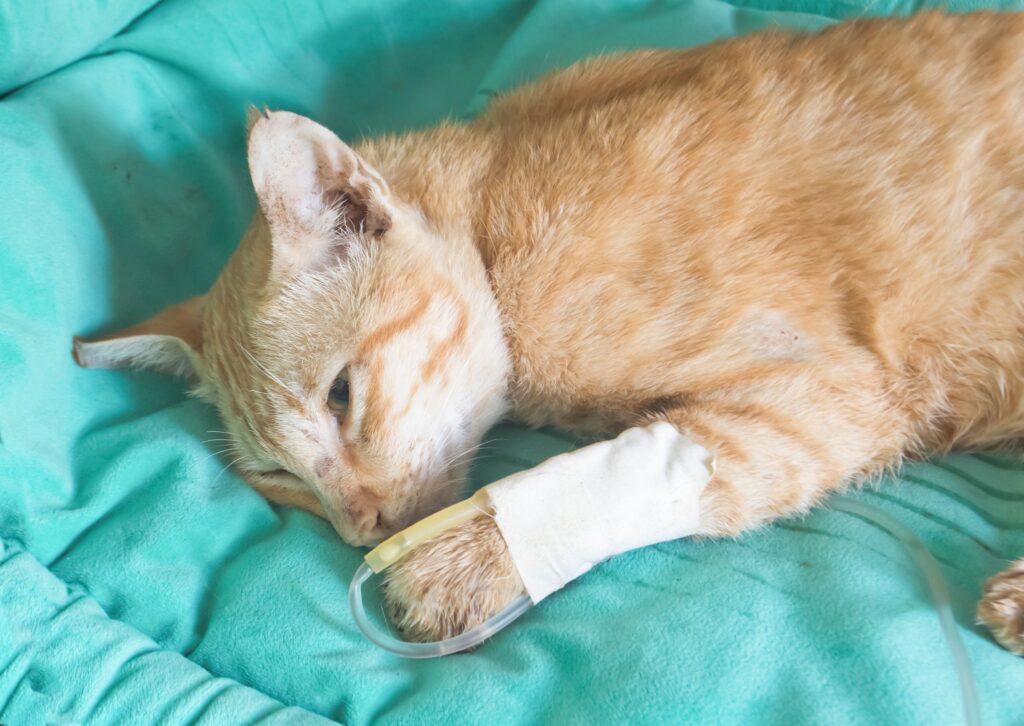Cats can wind up needing emergency care for a huge range of reasons – and some seem naturally more accident-prone than others! But much of what we see at Animal Emergency Hospital Volusia tends to be commonplace, and most pet parents will deal with one or more of these injuries in their pet’s lifetime.
Let’s review the most common injuries cats experience, including prevention, symptoms, and treatment.
Top 5 Cat Injuries
Lacerations: Cats who spend time outdoors are likely to encounter other cats or wildlife, and they may end up with scratches, scrapes or deeper cuts, called lacerations, as a result. Lacerations require veterinary attention due to the risk of infection. Plus, they’re painful! Wound care to stop bleeding, pain medication, antibiotics, stitches, and/or surgery may be necessary, depending on the location and severity of the laceration.
Trauma: The most common traumas we see in cats result from falling from a height or being hit by a vehicle. Depending on the severity of the trauma, injuries could range from bruising to fractured bones and internal organ damage. If you witness an accident or notice your cat limping or moving awkwardly, hiding, or vocalizing in pain, get them to the veterinarian. Diagnostic tests like X-ray, ultrasound or MRI may be needed to identify the extent of injury and determine if surgery is necessary.
Foreign body ingestion/toxicity: Cats don’t usually eat things they shouldn’t, but sometimes their curiosity can get them into trouble if they end up swallowing something inedible or toxic. They’re especially prone to linear foreign body ingestions – think string, yarn, ribbon, anything long – which can anchor at the base of the tongue and cause internal damage. Toxic flowers like tulips and lilies should never be kept in a cat’s home, and plants like sago palm should be avoided in yards. (Read a full list of what to avoid on the ASPCA Animal Poison Control website.) Common symptoms of ingestion and poisoning include vomiting, loss of appetite, nausea, diarrhea, abdominal pain, and lethargy.
Tooth fractures/issues: Feline tooth fractures can occur from biting down on something too hard, a fight with another animal, or trauma. Cats are also very susceptible to periodontal disease in general, so it’s a good idea to check your cat’s mouth for broken teeth, swollen or bleeding gums, tumors, or lesions. Cats with painful mouth injuries may be reluctant to eat, drink, or groom themselves, or may paw at their faces. Some broken teeth can be repaired, but in other cases, extraction is the best treatment.
Heat Stroke: You may not realize it, but cats can overheat fairly easily. Like dogs, the only way they can regulate their body’s temperature is by panting, which unfortunately is not very effective. If your cat spends time outdoors, especially in the summer months, be sure to offer plenty of water, and consider keeping them in when temperatures and humidity spike. Symptoms of heat stroke in cats include lethargy, excessive panting, drooling, pacing, or collapse. Immediate veterinary care is needed to avoid life-threatening organ damage.
Remember, cats are experts at hiding pain, and often go into hiding themselves when they feel unwell. If you think your cat requires emergency care, please give us a call. AEHV is open 24/7, and no appointment is ever needed. We ask that you call us at 386-252-0206 to alert us of your arrival and complete the admissions forms online.

